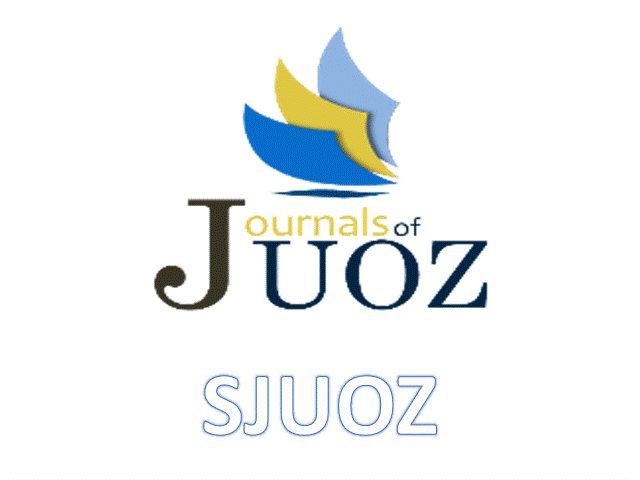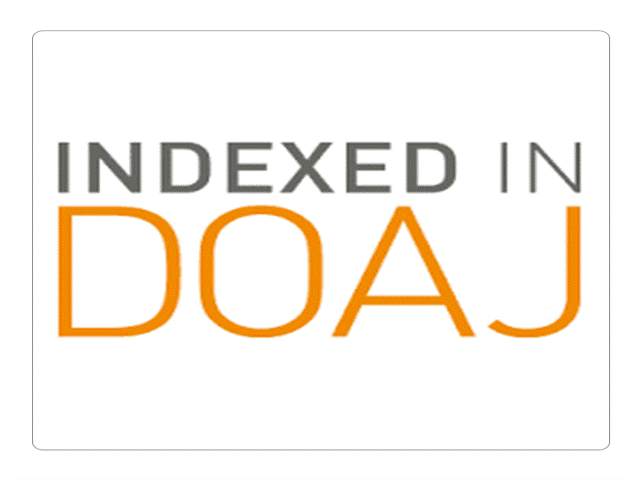Study on Biochemical Parameters on Hydatid Cyst Layers (Laminated and Germinal) and Surrounding Host Tissues Isolated From Different Intermediate Hosts
Keywords:
HCs layers, Biochemical analysis, Cholesterol-triglyceride, Urea, Uric acid, Creatinine, bilirubine, Animal, HumanAbstract
This study included biochemical analysis of hydatid cysts (HCs) (laminated and germinal layers) and hosts tissues of sheep, goats and cattle during the period from Nov. 2010 to Oct. 2011. Furthermore, biochemical analysis of germinal layer of HCs surgically removed from human liver and lungs were also included in study. The chemical analysis involved the determination of cholesterol, triglyceride and nitrogenous compound.
The germinal layer showed the highest content of cholesterol in HC of all hosts with the highest being in germinal layer of HCs in cattle liver (5.29 ± 0.65 mg/100g). Whereas, in host tissues, the highest level was observed in uninfected cattle liver tissues (35.71 ± 1.51mg/100g).
The triglyceride in laminated layer of HC was higher than that in germinal layer in HCs of all hosts, with the highest being in the laminated layer of HCs in cattle lungs (11.85 ± 0.28 mg/100g). While in host tissues, the uninfected tissues showed the high level of triglyceride with the highest being in cattle lungs tissue (40.23 ± 0.97mg/100g).The laminated layer of HC in sheep lungs contained the highest level of urea and uric acid which were (4.45 ± 0.80 and 1.71 ± 0.68 mg/100g), respectively as compared with the cyst in other hosts. The uninfected sheep lung tissues, showed the highest level of urea (31.0 ± 0.88 mg/100g), while the highest level of uric acid was observed in sheep lung tissues which was in direct contact with the HCs (1.52 ± 0.35 mg/100g).Creatinine contents of laminated and germinal layers of HCs in sheep liver along with host tissue in direct contact with HCs were the highest among the studied hosts (0.12 ± 0.01, 0.17 ± 0.01 and 1.52 ± 0.17 mg/100g), respectively. The bilirubine content of laminated and germinal layers of HC in sheep lungs along with the host tissues which were in direct contact showed the highest level among all studied hosts (0.266 ± 0.02, 0.342 ± 0.03 and 0.63 ± 0.013 mg/100g), respectively.
Downloads
References
Al-Bayati, S. M.; Aziz, O. H.; Abdulla, A. M., and Abed, S. A. (2010). Biochemical profile of hydatid cyst fluids of Echinococcus granulosus of sheep in Duhok area. Iraq Journal of Veterinary Medicine. 34(1):185-191.
Al-Nakeeb, R. A. (2004). Seroepidemiological and therapeutic study on hydatid cyst infection in Kirkuk and Tikrit provinces, M.Sc. Thesis, College of Medicine, Tikrit University, Iraq.
Al-Zobaidy, A. B. (1989). Chemical composition of hydatid fluid and laminated layer of Echinococcus granulosus from man and some other intermediate hosts in Iraq. M.Sc. Thesis, College of Science, University of Mosul, Iraq
Amman, R.W., and Eckert, J. (1996). Cestodes. Echinococcus. In: Parasitic diseases of the liver and intestines. Gastroenterol. Clin. North America, 25:655-689.
Anwar, Z. (1997). The effect of Echinococcosis on Rabbit and Sheep along with its control by indigenous plants of Pakistan. Ph.D. Thesis, Department of Zoology, University of Punjab. Pakistan.
Baswaid, S. H. (2007). Prevalence of hydatid cysts in slaughtterred sheep and goats in Hadhramout, Yemen. Ass. Univ. Bull. Environ. Res. 10 (2): 145-146.
Čmelik, S. (1952). Ein Antigenes polysacchridaus den Ecinococcus cysten. Biochem. Ztseh., 322: 456-462(English abstract)
Dow, J.; Lindsay, G., and Morrison, J. (1996). Biochemistry molecules cells and body. Addison-Wesleg Publishing company Inc. Wokingham England.
Fossati, P. and Prencipe, L. (1982). Serum Triglycerides Determined Calorimetrically With An Enzyme That Produces Hydrogen Peroxide. Clinical Chemistry, 28(10): 2077- 2080.
Frayha, G. J. and Haddad, R. (1980). Comparative chemical composition of protoscolices and hydatid cyst fluid of Echinococcus granulosus (Cestoda). Int. J. Parasitol., 10: 359-364.
Frayha, G. j (1971). Comparative metabolism of acetate in the taeeniid tapeworms Echinicoccus granulosus, Echioncoccus multilocularis and Taeniahydati gena. Comp. Biochem. Physiol., 39B: 167-170.
Hammodi. H. M. (1989). Chemical composition of protoscolices and germinal layer of Echinococcus granulosus from man and some other intermediate hosts in Iraq. M.Sc. Thesis, College of Science, University of Mosul, Iraq.
Kahn, C. M. (2005). The Merck veterinary Manual 9th ed. Merck and Co. Inc., White house station, NJ. USA.
Labbe´, D.; Vassault, A.; Cherruau, B.; Baltassat, P.; Bone`te, R.; Carroger, G.; Costantini, A.; Gue´rin, S.; Houot, O.; Lacour, B.; Nicolas, A.; Thioulouse, E., and Tre´po, D. (1996). Method selected for the determination of creatinine in plasma or serum. Choice of optimal conditions of measurement (in French). Ann. Biol. Clin., 54: 285–298.
Malloy, H. T. and Evelyn, K. A. (1937). The determination of bilirubine with the photoelectric colorimeter. J. biol. Chem., 119: 481-490.
Meerkhan, A. A. (2011), Biochemical studies on hydatid cysts of Echinococcus granulosus isolated from different intermediate host (sheep, goat, cows and human). M.Sc. Thesis, College of Education, University of Zakho, Iraq.
Mero, W.M.; Al-Zako, S.S., and Zakaria, S.J. (1988). Comparative study on some enzyme activity in Fasciola hepatica, Fasciola gigantia and Bovine liver. J. Edu. And Sci. Vol. 8. Dep. of Biology, College of Science, University of Mosul- Iraq, p 62-67.
Rahdar M. H.; Maraghil, S.; Rafei, A., and Razijalali, M. (2008). Comparison of some electrolytes in hydatid cyst fluid and serum of liver hydatidosis of sheep. Jundishapur Journal of Microbiology, 1(1): 10-14.
Rahimi, H.; Sadjjadi, S. M., and Sarkari, B. (2011). Performance of antigen B isolated from different hosts and cyst locations in diagnosis of cystic Echinococcosis, Iranian J. Parasitol., 6 (1): 12-19.
Refik, M.; Mehmet, N.; Durmaz, B., and Egri, M. (2002). Determination of some biochemical parameters in hydatid cyst fluids. Erciye Medical Journal, 24(1): 10-13.
Richards, K. S. (1984). Echinococcus granulosus equinus: The histochemistry of the laminated layer of the hydatid cyst. Fol. Histochem. Et. Cytobiol., 22 (1), 21-32.
Shaafie, I.A.; Khan, A., and Rambabu, K. (1999). Biochemical profiles of hydatid cyst fluids of E. granulosus of human and animal origin in Libya. J. Helminthol., 73: 253-258.
Thompson, R. C. A. and Lymbery, A. J. (1995): Echinococcus and hydatid disease, 1st ed. Wallingford, CAB International. (Cited: Radfar, M. H. and Iranyar, N. (2004). Biochemical profiles of hydatid cyst fluids of Echinococcus granulosus of human and animal origin in Iran. J. Vet., 4 (6): 435-442).
Thompson, R.C.A., and McManus, D.P. (2001). Etiology: Parasite and life-cycles. In: WHO/OIE manual on echinococcosis in humans and animals: A public health problem of global concern. (Eckert, J.; Gemmell, M.A,;Meslin, F.X. and Pawlowski, Z.S. ed.) World Organization for animal health, Paris, France, 1-19.
Tietz, N. W.; Burtis, C.A.; Ashwood, E. R. and Saunders, W. B. (1999). Text book of clinical chemistry 3rd Ed., 826-835 and 1245-1250.
Vercelli-Retta, J.; Reissenweber, N. J.; Lozano, W., and Siri, A. M. (1975). Histochemistry and histoenzymology of the hydatid cyst of Echinococcus granulosus. Part; 1. The germinal membrane. Z. Parasitkd., 48: 15-23.
World Health Organization Office International des Epizooties. (2001). WHO/OIE manual on echinococcosis in humans and animals: a public health problem of global concern. World Organization for Animal Health, Paris, France. p. 100-101.
Downloads
Published
How to Cite
Issue
Section
License
Copyright (c) 2013 AHMAD S. MERZA, WIJDAN M.S . MERO

This work is licensed under a Creative Commons Attribution 4.0 International License.
Authors who publish with this journal agree to the following terms:
- Authors retain copyright and grant the journal right of first publication with the work simultaneously licensed under a Creative Commons Attribution License [CC BY-NC-SA 4.0] that allows others to share the work with an acknowledgment of the work's authorship and initial publication in this journal.
- Authors are able to enter into separate, additional contractual arrangements for the non-exclusive distribution of the journal's published version of the work, with an acknowledgment of its initial publication in this journal.
- Authors are permitted and encouraged to post their work online.








